Nentepesi: As Iconic As Her Name
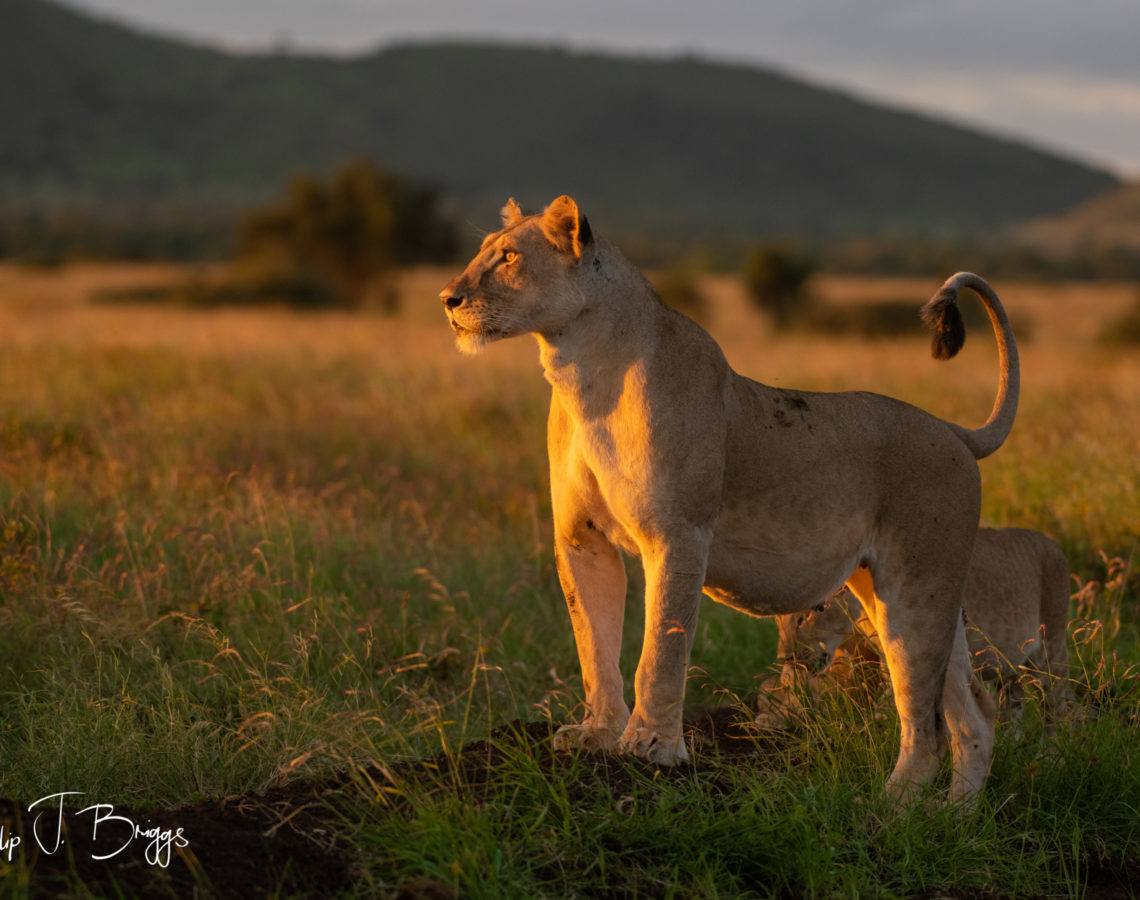
With nearly 250 lions roaming our ecosystem, it can be hard to keep up with them all. In this post, Philip Briggs provides an update on a group we’ve keenly followed for years.
In 2018, we enjoyed observing a trio of subadults – two sisters and a brother – disperse away from their natal range and move into Guardian Kapante and Lemiti’s zones. The lions forged a good partnership but we knew the brother would have to find his own path at some point. Sure enough, in 2019 the brother split away and the two sisters met up with the “Giraffe Boys,” a coalition of three local resident males.
Nentepesi is the calmer and more social of the two females, strong in character and the natural leader. Thanks to her dark coloration, she was given the Maasai name for the magnificent Acacia tortilis tree. Like that tree, Nentepsei is iconic and identifiable, and we had great hopes for her and her sister Nositeti.
Although we primarily rely on whisker spots to identify lions, we also use other key features; for example, Nentepesi has her lower right canine missing.
Nositeti also has two missing teeth, a top and bottom incisor (there should be six on top and bottom).
Not long after Nentepesi and Nositeti joined up with the Giraffe Boys, new cubs were spotted in the area, but they quickly disappeared. Then there was another litter…which again went missing. It seemed as though the young mothers were having trouble keeping their cubs alive. But now, it seems as though these two females have cubs again, and they seem have been able to get these litters over the hurdles that they had previously faced. Perhaps the third time is the charm! But with four cubs each (for a total group size of ten!) they have plenty of mouths to feed.
Luckily, finding water isn’t a problem right now; with the prolonged rainy season going deep into May, these lions have been benefiting from water puddles all around their habitat.
Recently, we spotted the group in their favourite place near a large water catchment surrounded by old dried lava rocks. To us humans, lounging in lava rocks seems like it would be incredibly uncomfortable, but it provides perfect isolation from people and livestock…and the cubs seemed pretty content!
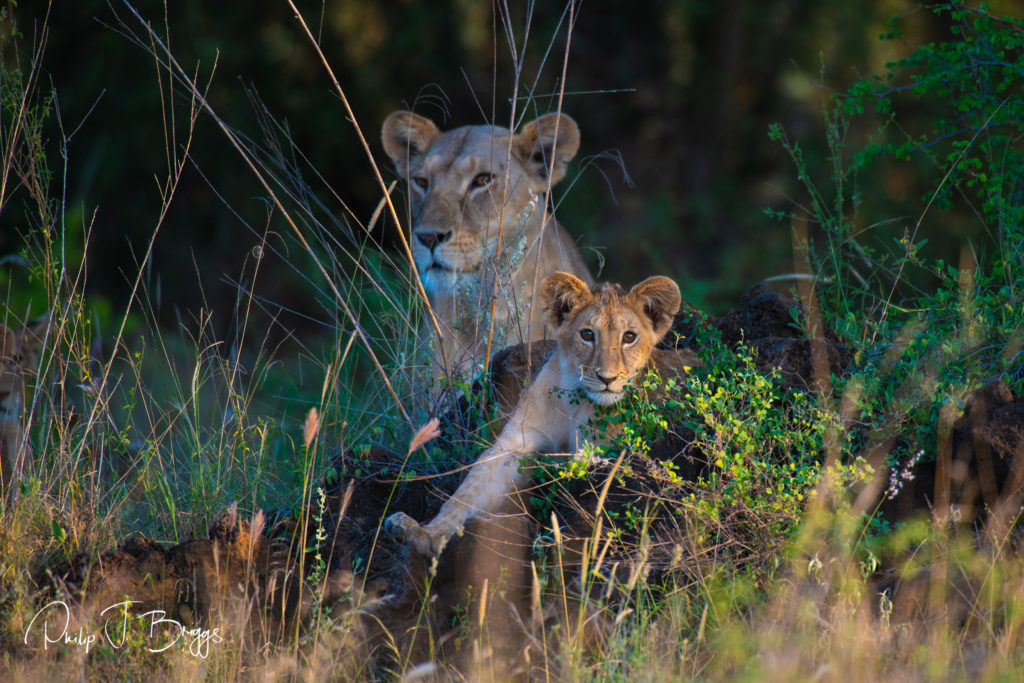
And just the other day, we caught up with the family again, this time out on the open grasslands. The cubs were barely taller than the grass and flowers, which made it hard for them to spot each other – and for us to spot them.
We finally realized that the family had just killed an enormous eland antelope only moments before we came across them. Despite elands’ huge size (up to nine times heavier than a lioness!) and strength, a single lion can still kill an eland; the act seems to defy logic and physics. But once the animal was down, it provided plenty of meat to feed the large family – this particular meal took over 24 hours to finish!
For now, Nentepesi, Nositeti, and their large family seem to be thriving. We hope that the sisters continue to nurture their family, and most importantly, teach their cubs that although wild prey can be harder to kill than livestock, it’s the best way to survive in this ecosystem.



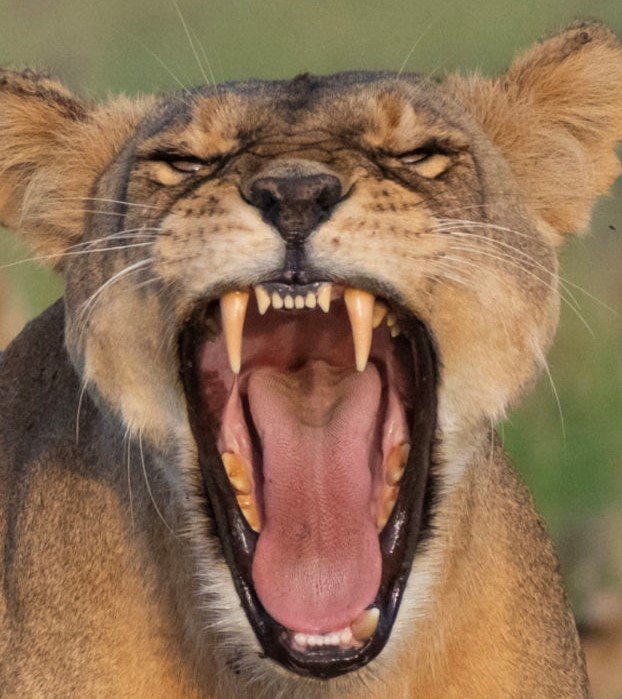
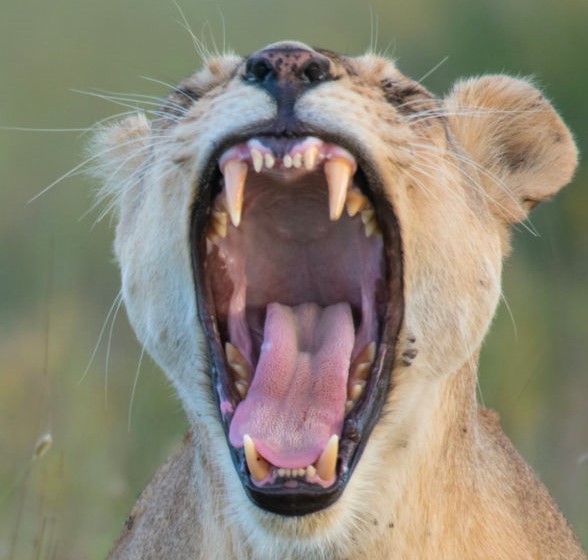
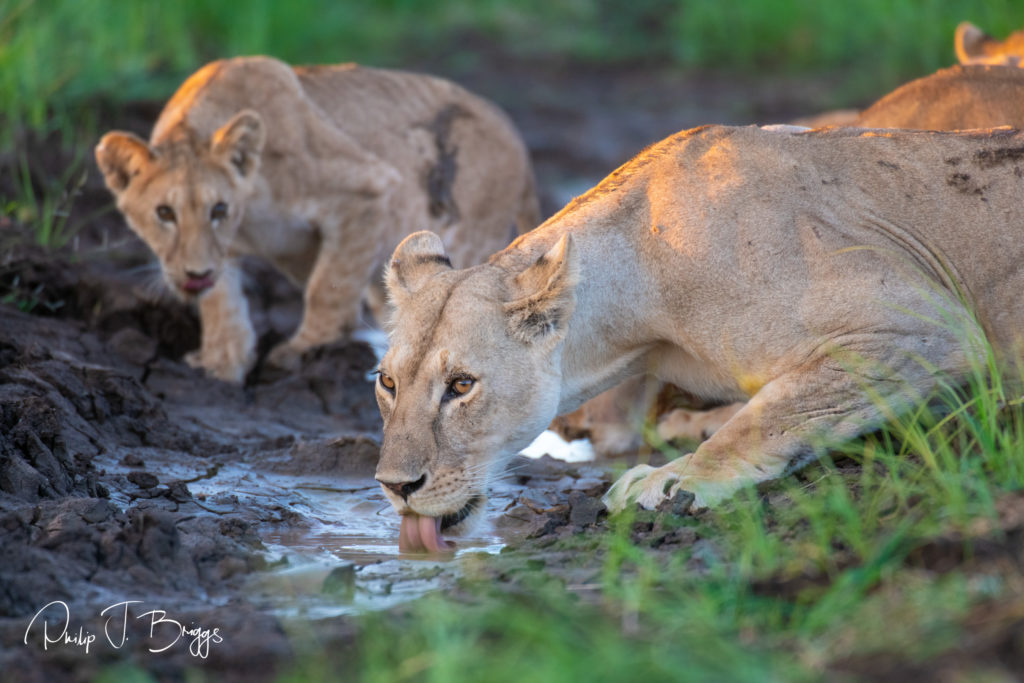
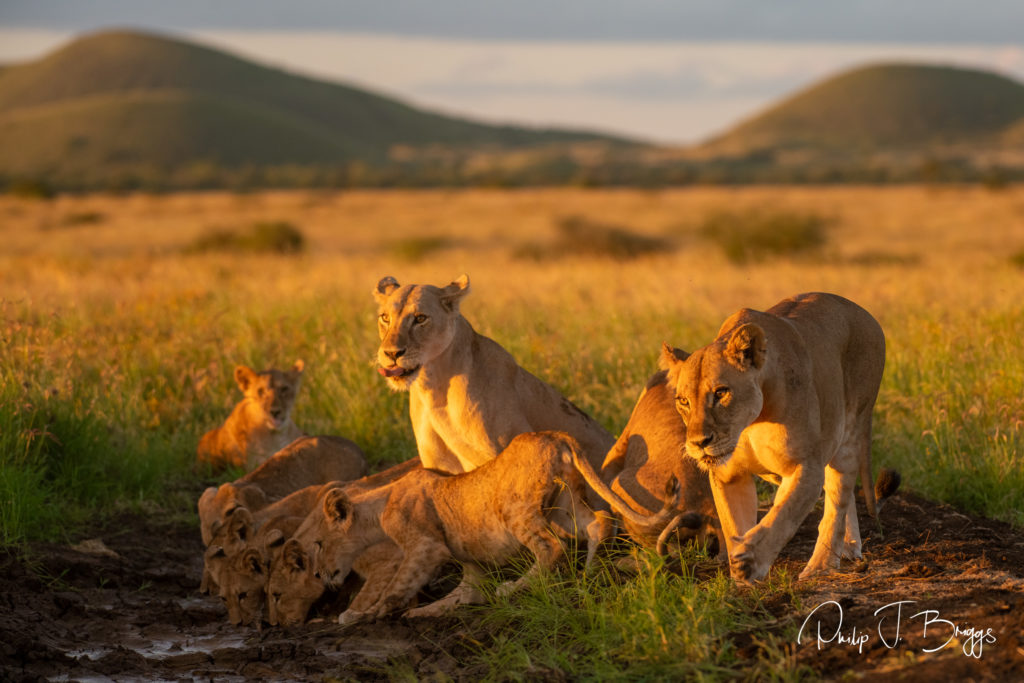
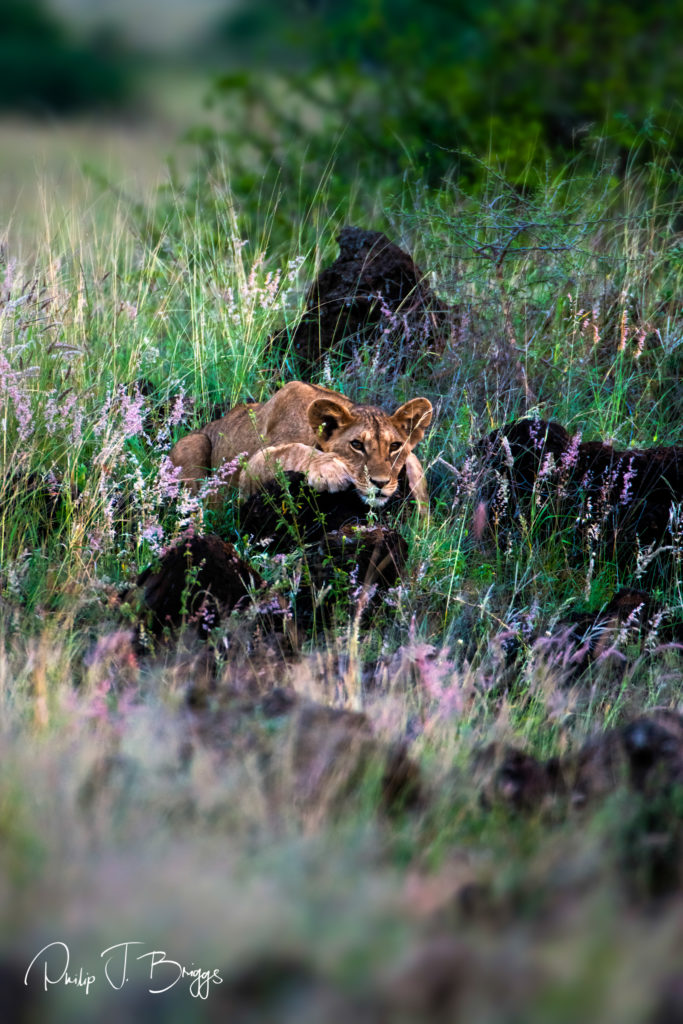
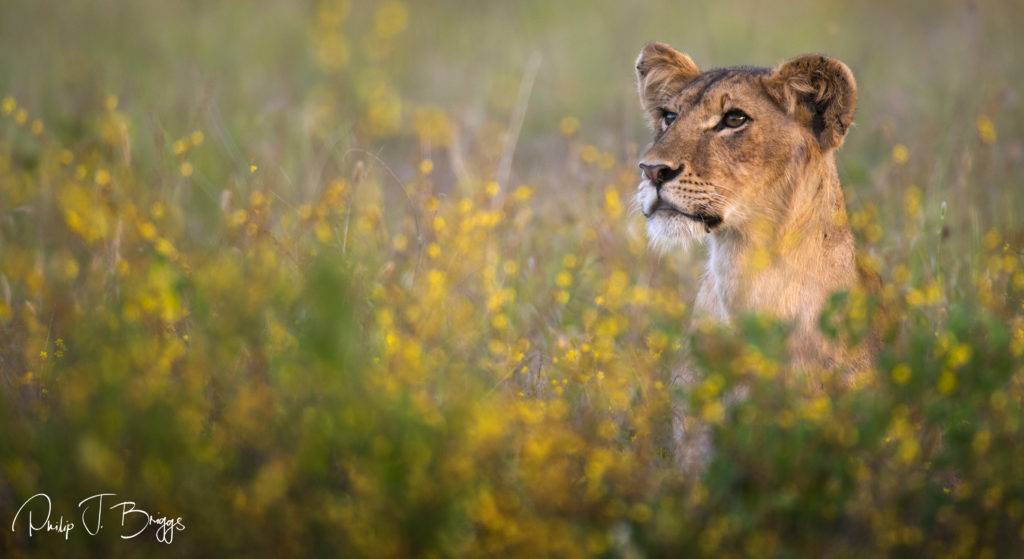
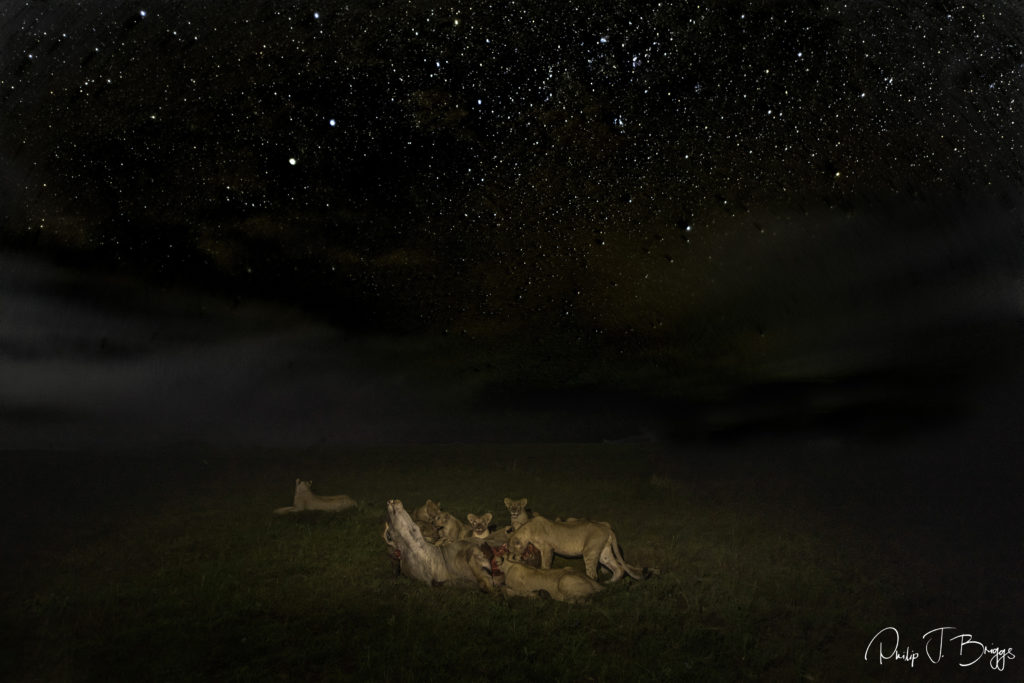
Leave a Reply